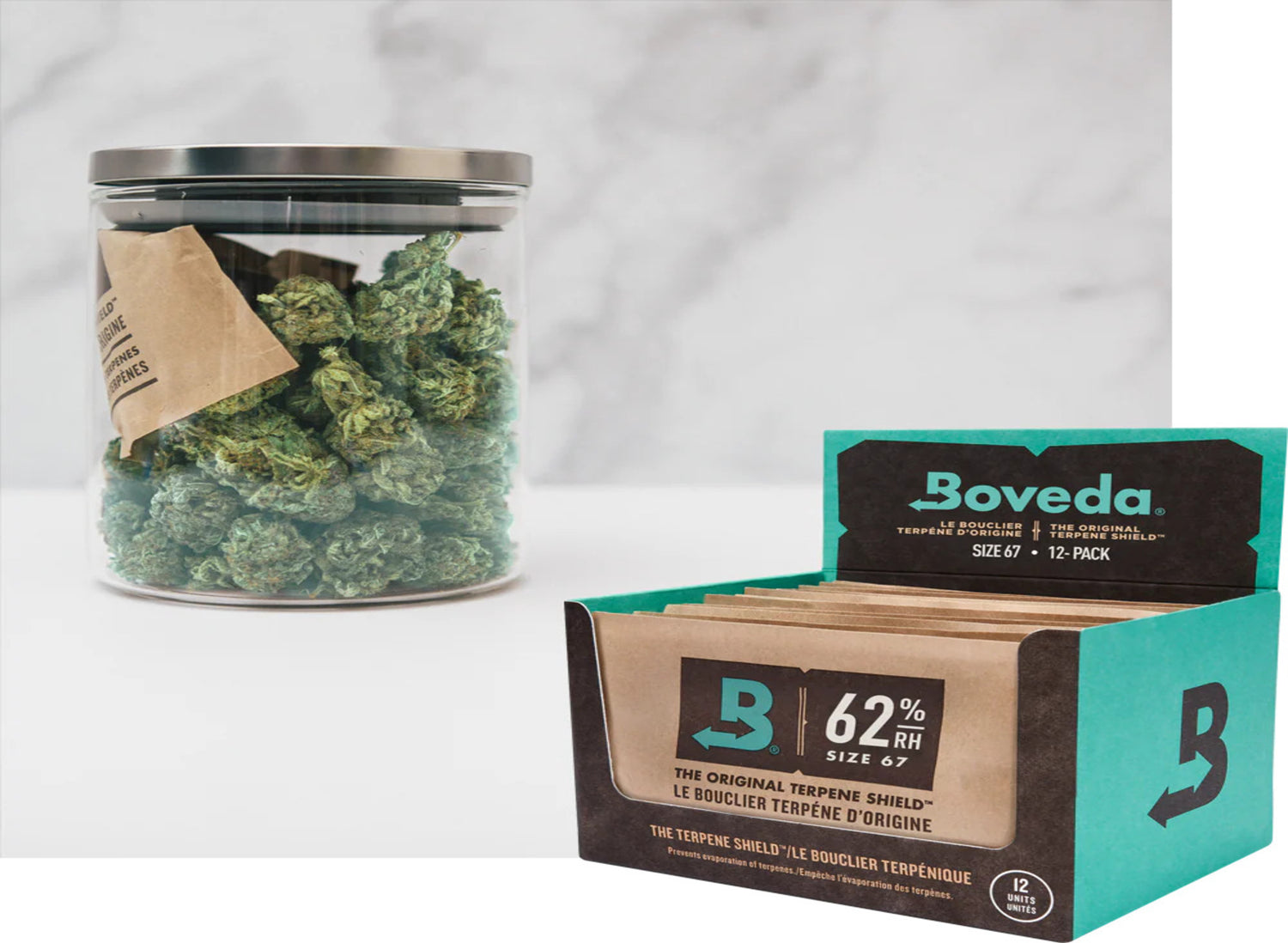Table of Contents
Comparing RH Packs for Different Cannabis Strains
Relative humidity (RH) control is essential for maintaining cannabis quality from production to consumption. Different strains have unique moisture requirements based on their physical characteristics and chemical compositions. Understanding these differences can significantly impact preservation of potency, flavor profiles, and overall consumer experience.
Understanding RH Basics for Cannabis Storage
Relative humidity measures the amount of moisture in the air compared to what the air can hold at a specific temperature. For cannabis, maintaining optimal RH levels prevents both overdrying and mold development. According to long-term storage guidelines, the ideal range typically falls between 58% and 65%.
The primary benefits of proper humidity control include:
- Preservation of cannabinoid potency
- Maintenance of terpene profiles
- Prevention of mold and bacterial growth
- Consistent burn rate and smoke quality
- Extended shelf life
Strain-Specific RH Considerations
Indica-Dominant Strains
Indica strains typically feature denser buds with higher resin content. These physical characteristics make them slightly more susceptible to mold in high-humidity environments. For these strains, the lower end of the RH spectrum (58-62%) often proves optimal, particularly in naturally humid climates.
Sativa-Dominant Strains
Sativa varieties generally have looser, less dense bud structures that allow for better airflow. These strains can often tolerate slightly higher humidity levels (62-65%) without significant mold risk. This higher humidity helps preserve their often complex and volatile terpene profiles that contribute to their characteristic cerebral effects.
Hybrid Varieties
For hybrid strains, RH requirements depend on their specific genetic makeup and physical characteristics. As noted in this strain-specific guide, examining the bud density and resin content can help determine the optimal humidity range.
Comparing RH Products on the Market
Several humidity control products dominate the cannabis market, each with distinct advantages:
Boveda vs. Integra Boost
The two market leaders offer slightly different approaches to humidity control. This comparison highlights that while Boveda pioneered the category, Integra Boost packs have gained popularity for their longevity and lack of salt transfer concerns.
Specialized RH Options
Beyond standard humidity packs, specialized options include terpene-infused varieties. According to this analysis, these can subtly enhance aroma profiles without overwhelming the natural characteristics of the strain.
When selecting packaging components for pre-rolls, many producers coordinate their humidity control strategy with their custom pre-roll cone selection to ensure the final product maintains ideal moisture levels through the entire consumption timeline.
Climate Adaptation Strategies
High-Humidity Environments
In naturally humid regions, cannabis requires additional protection against mold and mildew. This resource recommends using lower RH packs (58-62%) and implementing additional measures such as vacuum-sealed containers for long-term storage.
Arid Climate Considerations
In dry climates, cannabis can quickly become brittle and lose valuable terpenes. Prevention strategies include using slightly higher RH packs (62-65%) and minimizing container opening frequency.
Implementation Best Practices
Pack Size Selection
The appropriate pack size depends on container volume and product quantity. For retail packaging, 4g and 8g packs are standard, while bulk storage may require larger 67g options available through wholesale channels.
Replacement Timing
Knowing when to replace humidity packs is crucial for maintaining effectiveness. Many modern packs include indicator cards that change color when the pack requires replacement, as detailed in this guide.
Integration into Packaging Workflow
For commercial operations, integrating humidity packs into the packaging process requires careful planning. Fulfillment workflows should incorporate pack insertion at the optimal stage to ensure maximum effectiveness without disrupting efficiency.
Future Innovations in Humidity Control Technology
The cannabis humidity control market continues to evolve with several emerging trends:
- Sustainable and biodegradable options that address environmental concerns
- Smart packaging with integrated humidity sensors
- Strain-specific formulations calibrated to exact terpene preservation needs
- Reusable systems that reduce ongoing costs
As the cannabis industry matures, humidity control technology will likely become more sophisticated, offering precise solutions tailored to specific strain requirements and storage conditions.
By selecting the appropriate RH packs for specific strains and implementing best practices for their use, cannabis businesses can significantly enhance product quality, extend shelf life, and ultimately improve customer satisfaction and brand loyalty.











Leave a comment
All comments are moderated before being published.
This site is protected by hCaptcha and the hCaptcha Privacy Policy and Terms of Service apply.